An innovative coastal defence project in Southsea, Hampshire, could provide a useful template for similar projects across the UK. The Southsea Coastal Defence Scheme, which recently won a top prize at the Environment Agency’s Flood & Coast Excellence Awards 2024, rips up the age-old confrontational script of civil engineer vs. preservation society.

Colin Toovey is principal fluvial & coastal engineer and associate director at Royal HaskoningDHV
Southsea boasts a rich heritage, from its Victorian promenade to its impressive castle. In 1545, it was here that Henry VIII watched the Mary Rose capsize and sink, claiming around 500 lives. Today, the town’s Tudor fortifications and historic seafront are threatened by a more insidious invader: climate-driven coastal erosion and flooding.
Rising sea levels
Sea levels are rising at their fastest rate for more than 2,700 years and are predicted to rise a further metre before the end of the century.
Southsea’s 4.5km long seafront boasts 74 listed buildings, three ancient monuments, and a registered park, behind which are 10,000 homes and 700 businesses worth more than £1.25bn. Given the cost of defending it was a fraction of this cost, the decision was taken to ‘hold the line’ for at least 100 years.
In 2020, work began on the UK’s largest local authority-led coastal defence project, which had an initial price tag of £180 million. The remit was simple: design a new coastal defence offering protection from a 1 in 200-year major flood event, including the effects of climate change, and embrace the history, heritage, and what people value most about the seafront.
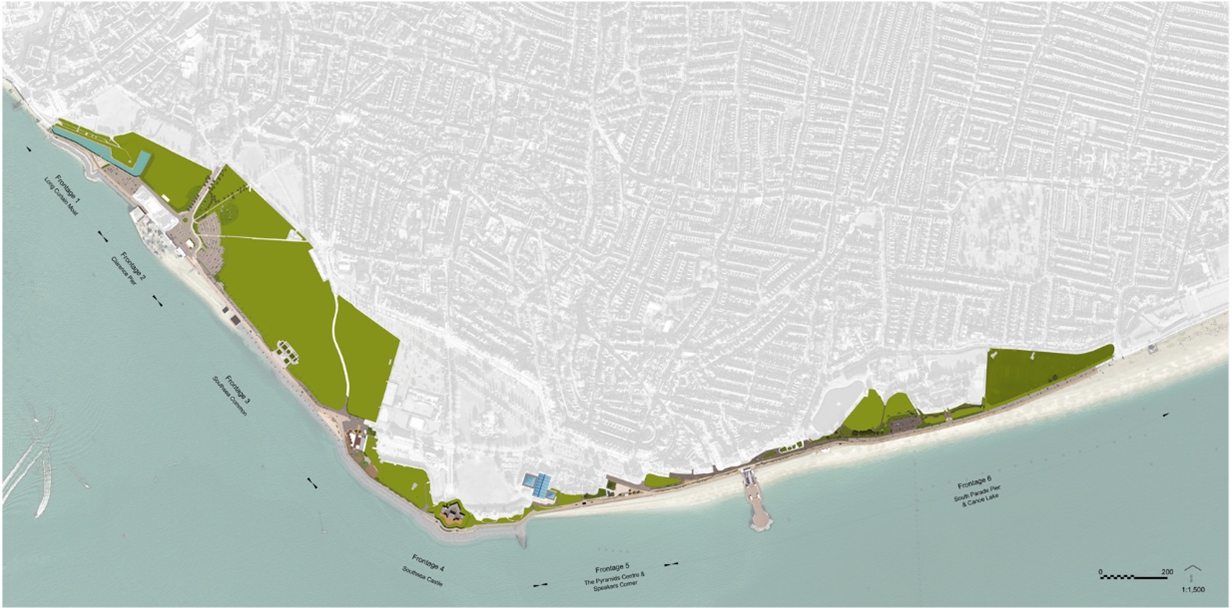
The project is divided into six different frontages, of which two have been completed: the aforementioned award-winning frontages Long Curtain Moat (Frontage 1) and Southsea Castle (Frontage 4).
Stakeholder Management
Although each presented unique engineering challenges, the key to success was managing relationships with the various stakeholders and those delivering the project, including Portsmouth City Council, Coastal Partners, Historic England, Environment Agency, LDA Design, VS BW and Wessex Archaeology.
Projects often fail in the design phase because planners and engineers don’t take on board the motivations of different stakeholders or engage them early enough in the process. In this instance, Historic England’s interest is in protecting and enhancing the highly designated heritage assets, so involving its experts early in the planning process prevented issues arising later and fostered trust.
Long Curtain Moat
For Frontage 1, the Long Curtain Moat, we created a coastal barrier using 11,474t of rock and raised and replaced the sea wall. This involved installing 525 linear metres of sheet piles to a depth of 15m. On these piles, we installed precast masonry blocks to form an ‘apron’ and the vertical wall. Historic England gave us invaluable advice at the outset, helping us to ensure the blocks were of acceptable character and material in relation to the original wall.
We also learned to expect the unexpected. For instance, historic walls were discovered during excavation, necessitating archaeological monitoring and investigation. We gave the archaeologists the time they needed by rescheduling activities and working in other areas. Instead of covering the walls with earth or removing them, we moved the defence line and walkway further forward. The walls became a design feature, highlighted by graze lighting. A walkway bridge now spans them so that visitors have excellent visibility of this latest discovery.
Southsea Castle
At Frontage 4, Southsea Castle, we provided Historic England with different design concepts to consider. We also invited them to site visits so that they ‘bought into’ the new design and became invested it.
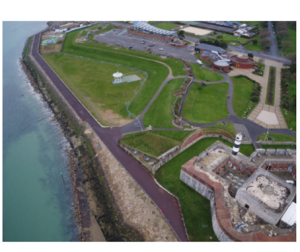
Before (2022)
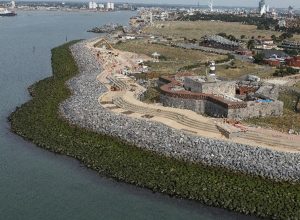
After (2024)
Before the construction, there was a pinch point where the castle protruded into the walkway. Now there is a wide multi-tiered promenade with the upper and lower levels connected by seating terraces and steps. In front of that is a low concrete wall which acts as a safety barrier and minimises wave overtopping. The primary defence is 145,000t of rock that dissipates wave energy. A total of 45 tidal pools were created on the rocks, and seed rock was used near the tideline to encourage marine life to colonise.
The promenade in front of the castle is a new focal point with fresh landscaping. Called ‘Theatre of the Sea’, it offers spectacular views of the Solent and is set to incorporate a poem from Poet Laureate Simon Armitage. Also, historic castle tunnels under the upper promenade have been preserved and marked with paving and information boards. A boulder play area for children, bee stations, improved lighting, and new seating complete its regeneration.
3D visualisations
To speed up the design and approval process we created 3D models and flythroughs of the designs. They supplemented the blueprints and artist’s impressions and were a big hit, particularly with non-engineer stakeholders, as they made things easier to visualise.
Zero waste aspiration
Our approach also involves reducing waste. We repurposed materials from the demolished sea defences by developing a local waste processing site to reuse concrete, earth, and stone — used for temporary working platforms and fill material for earthworks. Our goal is to prevent 92,000t of waste from going to landfill and cut landfill costs by £4M. Reducing lorry movements alone will eliminate 3,950t of CO2.
The remaining four frontages will be completed over the next four years. During that time, we will undoubtedly face fresh challenges.
Now I look at heritage very differently. I see it as an amazing design opportunity and as civil engineers and planners, we must challenge ourselves continuously. When we work with history, not against it, that’s when the magic happens.
- Colin Toovey is a principal fluvial & coastal engineer and associate director at Royal HaskoningDHV
Like what you've read? To receive New Civil Engineer's daily and weekly newsletters click here.
 New Civil Engineer Civil engineering and construction news and jobs from New Civil Engineer
New Civil Engineer Civil engineering and construction news and jobs from New Civil Engineer
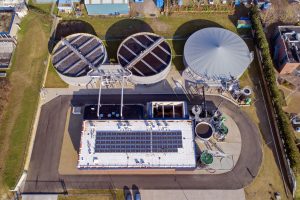

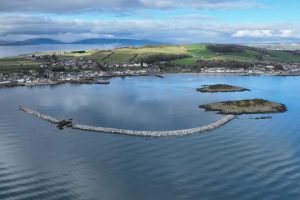
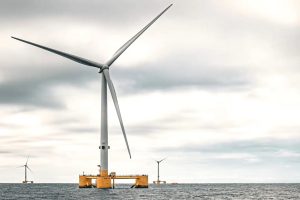
Have your say
or a new account to join the discussion.